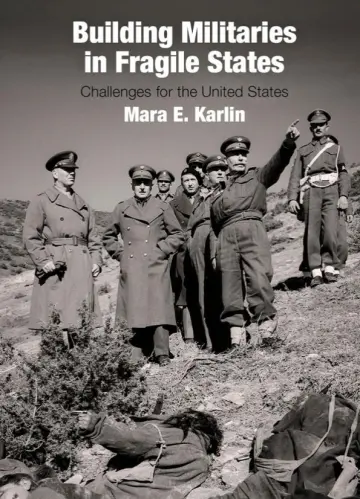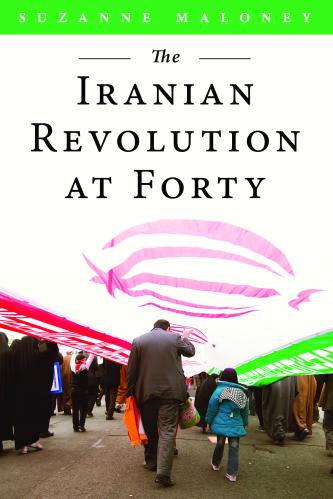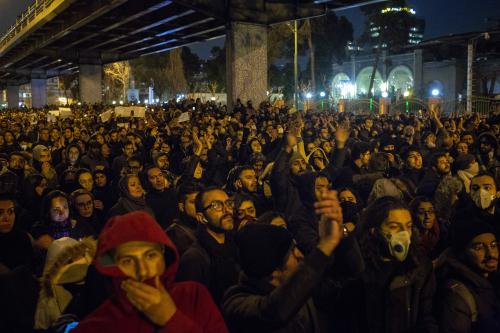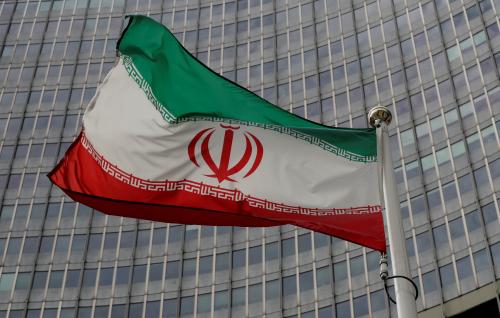U.S.-Iran dynamics have grown trickier in the wake of the killing of Iranian commander Qassem Soleimani. In this tense context, three key insights emerge: that U.S. strategy is lacking, that the Middle East landscape increasingly favors Iran, and that Washington needs to find ways to de-prioritize the region.
1U.S. strategy vis-à-vis Iran is convoluted and clunky. The Trump administration has outlined its vision of a fundamentally different Iranian regime through its “maximum pressure” campaign. Yet it has attempted this policy while simultaneously pursuing contradictory efforts.
On the one hand, the administration has promoted a National Security Strategy and a National Defense Strategy focused on great-power competition with China and Russia. On the other, its tactics for pursuing its objective with Iran lack a clear, unified strategy as illustrated by pulling out of the nuclear agreement (Joint Comprehensive Plan of Action, or JCPOA) absent any effort to build a pathway or to lay the groundwork for a new deal while failing to effectively lead and mobilize an international coalition to pressure Iran. The administration has promulgated vague, contradictory, and ad hoc responses to Iranian aggression — from leaping up the escalation ladder by killing Qassem Soleimani while confusingly lurching in the aborted response last summer when Iran shot down a U.S. drone.
To be sure, Qassem Soleimani had a proven record of harming U.S. interests in the Middle East over decades, given his leadership of Iran’s regional activities. One cannot and should not underestimate the (warranted) vitriol that current and former national security policymakers have toward him. Yet it remains unclear why he was killed, as well as why at that time and in that place.
Furthermore, the counter-ISIS fight has been severely disrupted over the last few weeks as the Iraqis, among other coalition members, appear uncertain about cooperation. Above all, the confusing overall U.S. approach is read by the Iranians as feckless, by regional partners and European and Asian allies as fickle, and by other U.S. adversaries like North Korea as presenting opportunities for mischief.
For those who question whether missile salvos by the Iranian military constituted the sum total of Iran’s retaliation for the Soleimani killing, let’s be clear: Though the timing and the target of future action are uncertain, there should be no doubt that further Iranian response will follow. We have reached the end of the beginning of this escalatory cycle. That response could take the form of attacks by Iranian clients such as Hezbollah against soft targets frequented by U.S. military personnel, or directly against U.S. diplomatic or civilian personnel across the Gulf or the Levant, for example. It betrays a fundamental misunderstanding to say Iran has been deterred from a further state military response; that is not Tehran’s comparative advantage, nor would it ever represent the thrust of its retaliation given the sophisticated and capable clients it has built around the region.
2The Middle East is moving along a trajectory that increasingly favors Tehran. In Syria, Iran has managed — with heavy support from Russia and Hezbollah, among others — to keep the despotic leader, Bashar Assad, in power. In Lebanon, the new government further empowers Hezbollah and Damascus, and it is unlikely to take real steps to prevent the economy from further tanking or to address protesters’ valid frustrations. In Iraq, key constituencies are seriously reconsidering the U.S. military presence. In Yemen, the Saudis and the Emiratis spent years battling the Houthis, with little to show for it besides horrific Yemeni losses and Iranian delight.
Across the region, Iran’s clients are only growing in capacity and capability. It is worth recalling that the regime has always found ways to fund its priorities — such as building Hezbollah in the throes of Iran’s 8-year war with Iraq — and will continue to do so. To be sure, domestic discontent inside Iran and in places like Lebanon are certainly unhelpful for the regime in Tehran, as are the sanctions draining the Iranian economy, but overall, the trajectory is increasingly positive for Iran.
However, there are steps the United States can take to adjust this trajectory and regain influence, particularly regarding Lebanon and the Gulf. Hezbollah and Iran would be overjoyed if the United States gave up on Lebanon. The United States should maintain its involvement there, particularly the relationship with the Lebanese military, but must be cognizant that the new Lebanese government is abysmal. It is essential to watch closely as the military and the government sniff around for a new rapprochement, to ensure that the military continues to tackle threats of mutual concern, and to increase force protection for American military and diplomatic officials in Lebanon. The United States should also be willing to excoriate Lebanese leaders who further undermine Lebanese sovereignty, such as sanctioning Foreign Minister Gebran Bassil, who personally facilitated Hezbollah’s increasingly broad-based political gains.
Across the Gulf, ratcheting down tensions is a shrewd move. Key Gulf states like the United Arab Emirates and Saudi Arabia are seeking accommodation with the Iranians. The United States should also encourage an end to the Saudi spat with Qatar and urge the Saudis to find a path out of the Yemen war. Above all, the United States should normalize the U.S.-Saudi relationship rather than prioritize it, which requires a hard look at U.S. interests vis-à-vis Riyadh and serious consideration of how best to encourage positive behavior while punishing problematic behavior. All of these steps will both decrease dangerously high pressures while further enabling the United States to focus on the fundamental challenges.
3The United States must find a way to meaningfully deprioritize the Middle East. Although the real geopolitical challenge going forward is posed by China, the United States remains trapped in Middle East purgatory. On the tombstone of the post-9/11 wars will be written some elaborate combination of perplexity over why they have lasted so long; haziness over their focus; and ambiguity and anxiety over the balance sheet of what they achieved, prevented, and exacerbated.
And yet America’s over-militarized approach to the region continues. At least 20,000 new U.S. military forces have been sent in recent months, bringing the total estimate of U.S. military personnel in the Middle East to 80,000. This increase notably comes at a time when the U.S. diplomatic presence is plummeting in places like Iraq.
The administration’s maximum pressure campaign is resulting in maximum focus on Iran. There are, of course, attendant opportunity costs for doing so. The geopolitical challenge posed by China — the primary threat to global order —is receiving too little time, attention, and resources.
While the United States should depart Middle East purgatory, it should not do so in a way that benefits the Russians. The Russians, not the Americans, have committed to consistent diplomatic offensives across the region. However, the United States can deprioritize the region without exacerbating Russian influence by deepening its diplomatic posture, convening like-minded and productive coalitions, and making it harder for Russia rely on the benefits of a regional security order managed by the United States.
Implications for U.S. Policy
The dynamics of the U.S.-Iran relationship are inextricably linked to regional stability and security. The U.S. government should examine the following areas of concern:
Strategy and execution: Given that U.S. strategy toward Iran — and the Middle East — is convoluted, the administration should clarify what it is trying to achieve, why it is trying to do so, and above all, how it will do so.
Questions to consider include: What is the administration seeking to achieve in its policy vis-à-vis Iran and the broader Middle East? How does it plan to implement this strategy — particularly given the profound opportunity costs in light of the high price of geopolitical competition with China and Russia? And, how is its messaging effectively supporting strategy execution?
Counter-ISIS campaign and coalition: The conflagration between the United States and Iran has imperiled the fight against ISIS and fueled discontent among some Iraqis.
Questions to consider include: How and in what ways has the counter-ISIS campaign and coalition been degraded by the latest escalation between the U.S. and Iran? What role can Congress play to deepen U.S. engagement and consultation with key coalition members — above all, the Iraqi government?
A deal in disarray: Detonating U.S. participation in the nuclear agreement rather than considering ways to improve it has resulted in the United States dividing itself from its fellow signatories while Iran pursues its own agenda.
Questions to consider include: What pathways may succeed for building a level of agreement between Iran and key international actors to minimize its nuclear program?
U.S. regional presence and purpose: For two decades, the United States has overwhelmingly relied on a military approach to the Middle East — and a flawed one at that. The administration is doubling down on that approach as the military’s posture has skyrocketed, despite little evidence that the swelling numbers of U.S. troops are effectively deterring threats. If the U.S. military is forced to suddenly depart from Iraq, the U.S. government’s ability to influence and act will be severely handcuffed, to say nothing of the welcome that its departure would receive from ISIS and Iran. And in critical places like Syria, the military’s mission is worryingly opaque and colored by announcements of — and occasionally execution of — precipitous redeployments without serious consultation of this body or of key coalition members. Above all, this emphasis on a military approach has come at the expense of a diplomatic approach as the U.S. diplomatic presence regionally — particularly in Iraq — has been severely degraded. The U.S. military posture in the region should be streamlined, particularly forces across the Gulf in places like Kuwait and Saudi Arabia, increasingly rely on “warm” rather than “hot” bases, and the various headquarters should be substantially reduced.
Questions to consider include: Under what conditions does the administration plan to redeploy the 20,000 new U.S. military personnel deployed to the Middle East? How does the administration plan to generate those conditions for withdrawal? How can the United States right-size its regional military posture and appropriately tailor it to countering likely threats? How can it effectively streamline its Middle East military posture in light of the global context? How can it grow and rely on a more robust diplomatic presence in the region?
In sum, the lack of Middle East security and stability is threatening to monopolize U.S. national security resources. There are no simple solutions. However, some steps are overdue in leading U.S. strategy toward the Middle East in a more coherent and sustainable direction.









Commentary
Three key insights for US policy in light of recent escalation with Iran
January 29, 2020